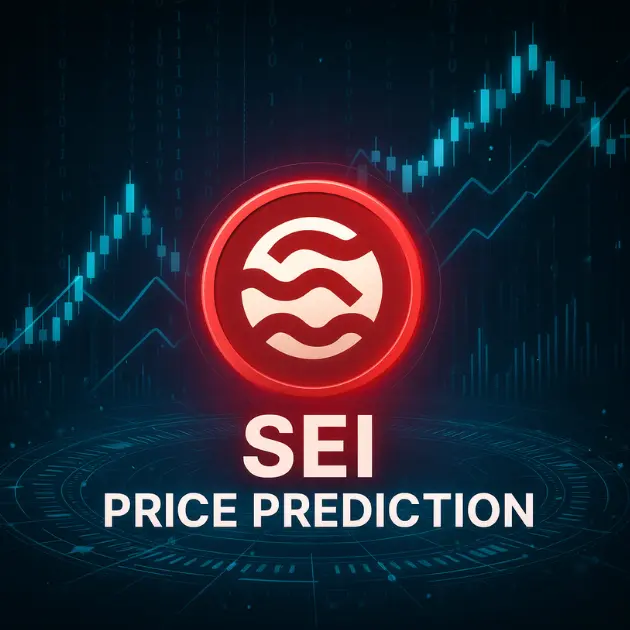The creation of blockchain technology has been a game-changer. At the core of the technology is the ability to trade digital assets. That said, the majority of blockchains have not been created with the ability to trade digital assets easily.
The Sei network is looking to give developers the ability to design and create scalable apps that are completely decentralised. What that means for the SEI price in the future remains to be seen. What will SEI’s price look like a few years down the line?
SEI Price Prediction 2030
Looking ahead to the future is one of the most difficult aspects of investing in cryptocurrencies. It is important to note that experts foresee a bullish future for the crypto marketplace, with many seeing exponential growth through the end of the year and into 2026.
But what will things look like over the next few years? A good barometer is to look ahead five years. What will SEI look like in 2030? Currently trading at roughly $0.34 per SEI token, there is still substantial growth to be achieved.
Experts see SEI beginning in 2030 at a range of $1.83 to $2.23 per token. By the end of the year, that range could increase to roughly $2.50 to $3.00 per token. Hitting that mark would result in a near 800% increase over its current price.
Whether SEI will be able to achieve that price point remains to be seen. The cryptocurrency marketplace is notoriously volatile, especially when moving away from the largest and most popular stablecoins on the market.
What is the Sei Network?
To make it a simple explanation, Sei is a Layer 1 blockchain that is totally open source. More importantly, it was created to optimise the process of trading digital assets. Its network is currently one of the fastest blockchains out there, operating at a theoretical speed that can process 12,500 transactions per second while also boasting a block finality time of 380 milliseconds.
High-speed transactions like these ultimately make Sei the perfect place for building gaming finance (GameFi) platforms, non-fungible token (NFT) marketplaces, and decentralised exchanges.
The network was ultimately built using the Cosmos SDK framework. This gives it interoperability with the Inter-Blockchain Communication Protocol (IBC). Because of this, the Sei network is capable of exchanging tokens and data across other IBC networks while still retaining its infrastructure.
Tops Features of Sei Network
As a Layer 1 network, Sei is capable of providing infrastructure to developers who want to build user-friendly, high-performing decentralised finance (DeFi) applications. That said, there is a lot more to the Sei network than just that. In order to understand the potential of Sei, it helps to know the most prominent features.
Lightning-Fast Transactions
The speed of a blockchain’s transaction comes down to how long it takes for validators on the network to reach a consensus when it comes to determining the validity of the transaction. This usually encompasses block proposal and finalisation, which can take time.
The beauty of the Sei network is that it reduces the ‘time to finality’ of a block to under 400 milliseconds. This is largely because of Sei’s custom consensus mechanism. Basically, this means that the network is capable of handling multiple transaction orders at one time, creating faster block finality.
DeFi Applications
Centralised exchanges make use of an off-chain order book in an effort to control the major share of crypto trading volume. Centralised exchanges are cheap, fast, and efficient, but they ultimately go against the decentralised nature of crypto.
Decentralised exchanges, meanwhile, exist across several chains but can deal with slow execution and network congestion. Sei’s network uses a built-in order book infrastructure, plus an order-matching engine, to resolve those issues. This gives developers the ability to build far more scalable decentralised exchanges while offering more stable liquidity.
Frontrunning Mitigation
Frontrunning happens when traders use their pending transaction knowledge in order to sneak their own trades in before another trader. Sei’s network uses frequent batch auctioning in order to minimise the potential of frontrunning on its network.
Basically, these batches clear market orders at a set price in order to keep traders from placing those orders in queues. Because of this, the Sei network offers a much fairer trading environment for all.
Interoperability
Finally, there is the matter of interoperability. Through its Cosmos ecosystem, Sei becomes interoperable with other IBC blockchains. More importantly, communication across other changes becomes far more efficient and scalable.
As it turns out, apps are also much more migratable, especially since Sei uses a standardised smart contract platform called CosmWasm. The ecosystem is welcoming to new developers, providing a big toolkit that gives developers the ability to write interoperable contracts using Rust, a familiar programming language.
Sei’s Twin-Turbo Consensus
The Twin-Turbo consensus is ultimately based on Cosmos’ Tendermint consensus. The latter has a ‘single slot finality’, providing virtually instant block finalisation. The block finality time is just six seconds, virtually negating the previously required waiting period for block finalisation.
Through Tendermint, the user proposing the block creates it and distributes that block through the network. Validators ultimately have to wait to get all of the relevant data required to not only reach a consensus but also to finalise the block, which takes about 13 minutes on other chains.
Using the Twin-Turbo mechanism, building on Tendermint, Sei is able to bring down block finality to just 380 milliseconds. The hope is that this reduction of ‘time to finality’ will create faster, more efficient, and cheaper transactions for users and developers on the network.
A Bright Future for Sei?
At the end of the day, there are a lot of things that can change in a relatively short period of time, especially in crypto space. Though experts are optimistic about Sei, it is vital that the network continues to develop technologically and provide cross-chain interoperability.
What does that mean for the price of the SEI token? Time will tell, but there is cautious optimism surrounding both the token and network.

